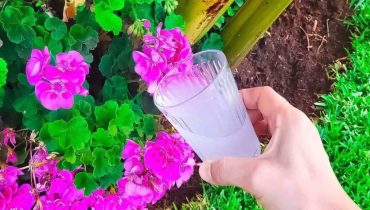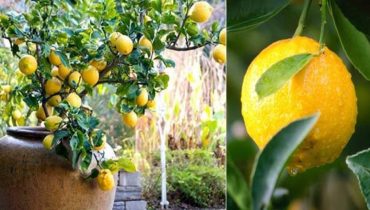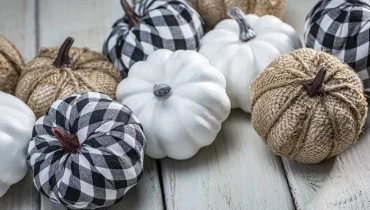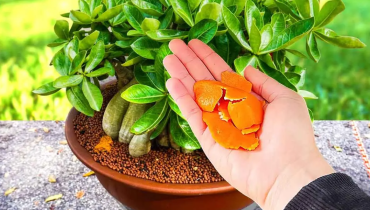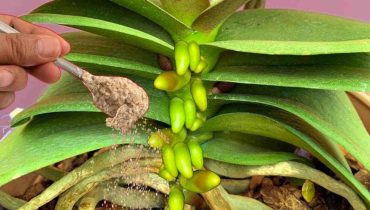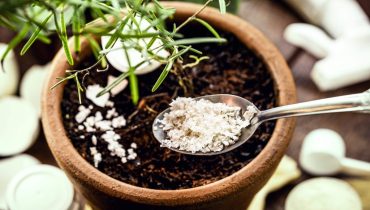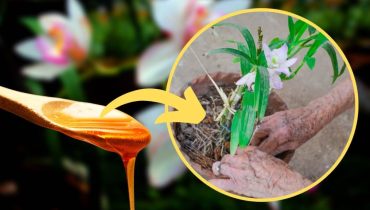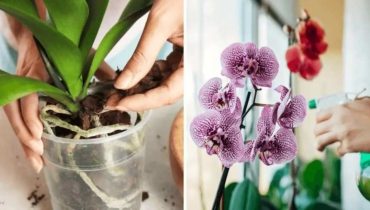4 Tips to Remove Grease from Kitchen Cabinets
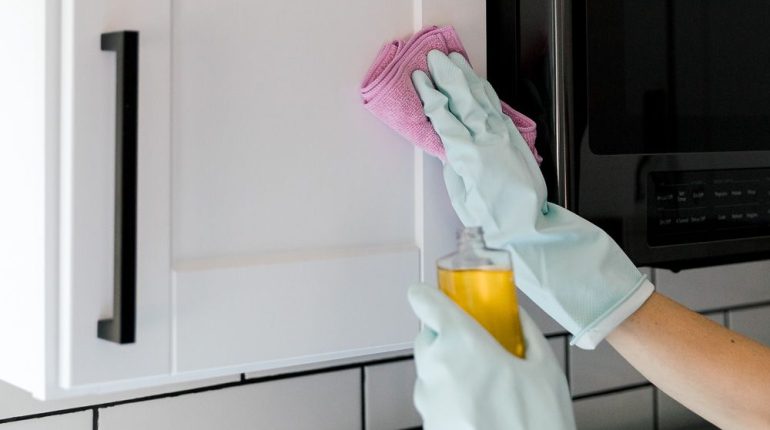
Posted October 24, 2023 by: Admin
A sparkling clean kitchen always looks more inviting and pleasant. For this, it is necessary to maintain hygiene in this room of the house, without forgetting its closets, which undergo rigorous tests. Between grease stains, food splatters, and oil spills, these cabinets often bear the brunt of it all. We often think of cleaning all the kitchen items but forget to clean the cabinet doors. Over time, the accumulated grease and dirt will become more stubborn and difficult to remove. We’ll show you how to quickly and effectively get rid of that buildup of grease on your kitchen cabinets.
Clean the Cabinets with Dish Soap and White Vinegar
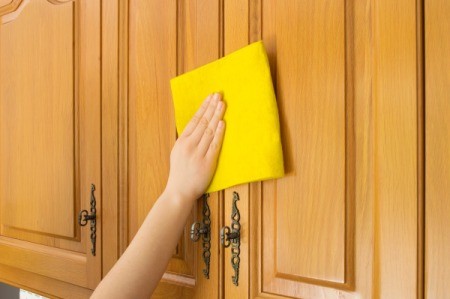
Dish soap is a gentle way to clean and degrease all surfaces. When combined with white vinegar, a powerful cleaning agent, its effectiveness increases many times over. And with good reason, because vinegar is an excellent degreaser and disinfectant. Grease and dirt stains on your cupboards are now a thing of the past.
To use this method, you will need:
- 2 tablespoons of organic dishwashing liquid
- 50 cl of warm water
- 25 cl of white vinegar
Mix the ingredients in a container and soak a sponge or cloth with the liquid. Rub the cabinet doors, then rinse with a damp sponge and wipe with a microfiber cloth. Don’t hesitate to use an old soft toothbrush to clean hard-to-reach corners to complete your cleaning. Note that for a flawless finish, you can treat your wooden kitchen cabinets with mineral oil to polish them and perfect their cleanliness. Say goodbye to stubborn fat with this gentle method.
Curd Soap
The mild action of curd soap is recommended for washing wooden surfaces such as kitchen cupboards. To do this, simply mix warm water with a tablespoon of liquid curd soap and stir it all together. Use this detergent to clean the cabinet doors with a sponge and then rinse with a damp cloth. You can replace curd soap with soft soap to remove grease stains from kitchen cabinets. With this gentle method, you can clean your wooden furniture without damaging it.
Apple Cider Vinegar
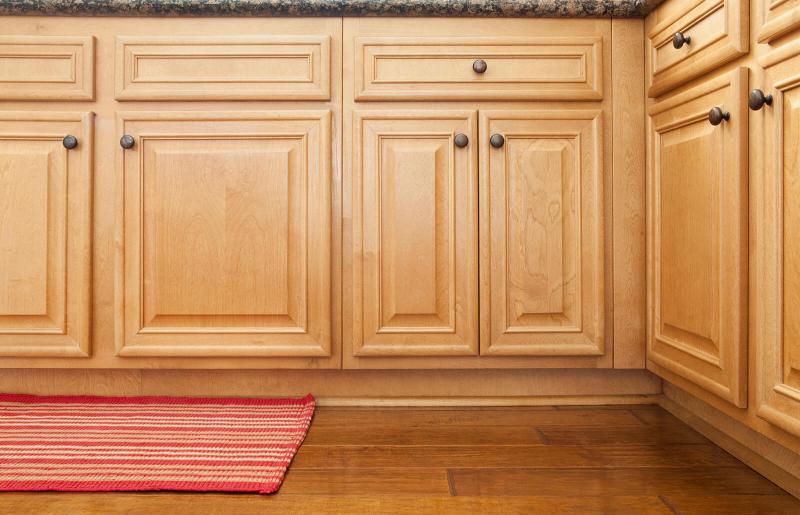
Apple cider vinegar is a household ally. It has antiseptic properties and, like white vinegar, helps fight bacteria. In addition, its acetic acid content makes it easier to remove grease from surfaces.
To use it, mix two equal parts apple cider vinegar and water in a saucepan and bring to a boil. Then allow the solution to cool, soak a sponge with the mixture and clean your kitchen furniture. Then rinse with cold water.
Baking Soda

Also, note that baking soda can be used to clean kitchen cabinet doors, as long as they aren’t made of wood. Baking soda is considered a natural but abrasive cleaner and can damage waxed or painted wood surfaces over time. For this type of wood, the two methods above are still ideal for gentle and effective cleaning.
How Do You Clean Painted Kitchen Cabinets?
For painted kitchen cabinets, linseed oil is still the ideal solution. To make this homemade cleaner, mix together some linseed oil, turpentine, and flour. Dip a sponge in this mixture and clean your lacquered furniture. Turpentine is an essential oil that is commonly used in the home because it acts as a solvent. Linseed oil protects and improves wood surfaces. As for flour, while not commonly used, it does help in removing stubborn grease stains.
With these natural ingredients, removing sticky grease from cabinets becomes quick and easy. Your furniture will shine with cleanliness and at a lower cost.
FAQs
How often should I clean my kitchen cabinets to prevent grease buildup? It’s a good practice to clean your kitchen cabinets at least once a month to prevent grease buildup. However, if you cook frequently, you might want to clean them more often.
Can I use these methods on all types of kitchen cabinet materials? These methods are safe for most kitchen cabinet materials, but be cautious with wood surfaces. Use gentle cleaners like curd soap on wooden cabinets.
Is it necessary to use mineral oil after cleaning wooden cabinets with dish soap and vinegar? While not necessary, using mineral oil after cleaning can help protect and restore the shine of wooden cabinets.
What’s the best way to clean the hardware (handles and knobs) on kitchen cabinets? You can clean cabinet hardware with a mixture of warm water and mild dish soap. Scrub gently with a soft brush or cloth, then rinse and dry them thoroughly.
Can I use these cleaning methods on painted kitchen cabinets as well? Yes, you can use these methods on painted kitchen cabinets, but be especially cautious with abrasive cleaners like baking soda, as they may affect the paint finish. Always test a small, inconspicuous area first.




